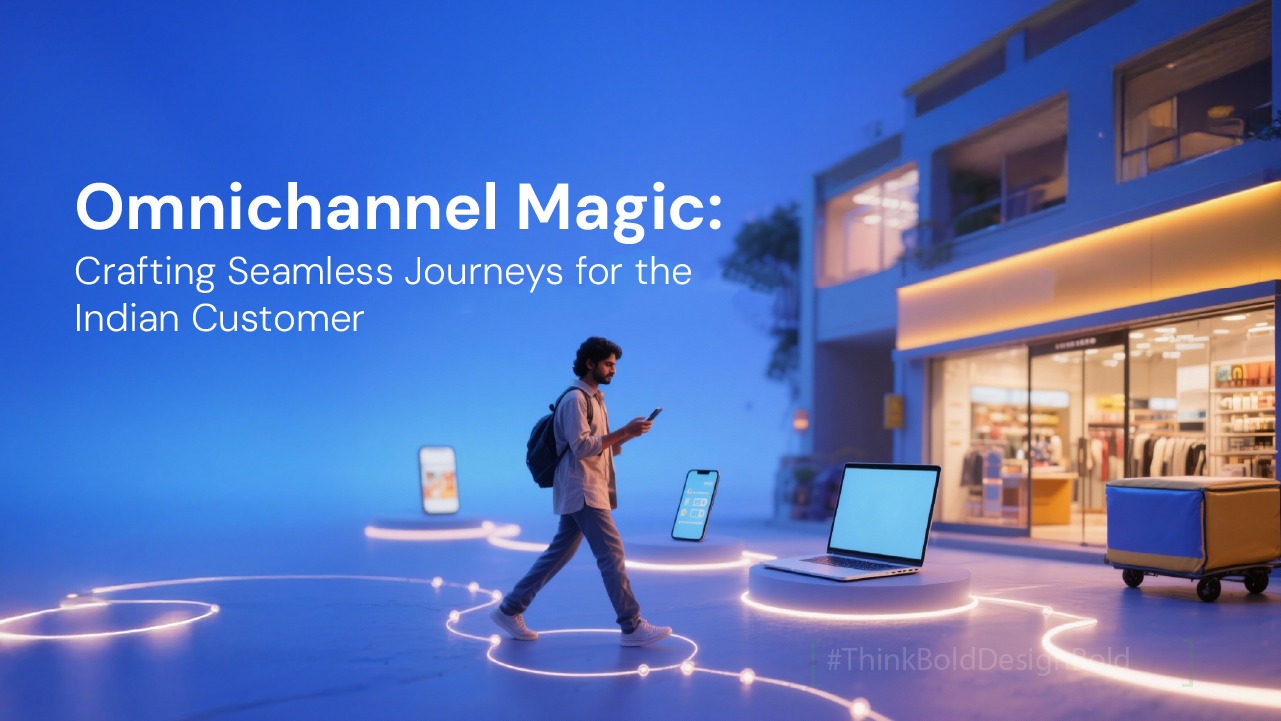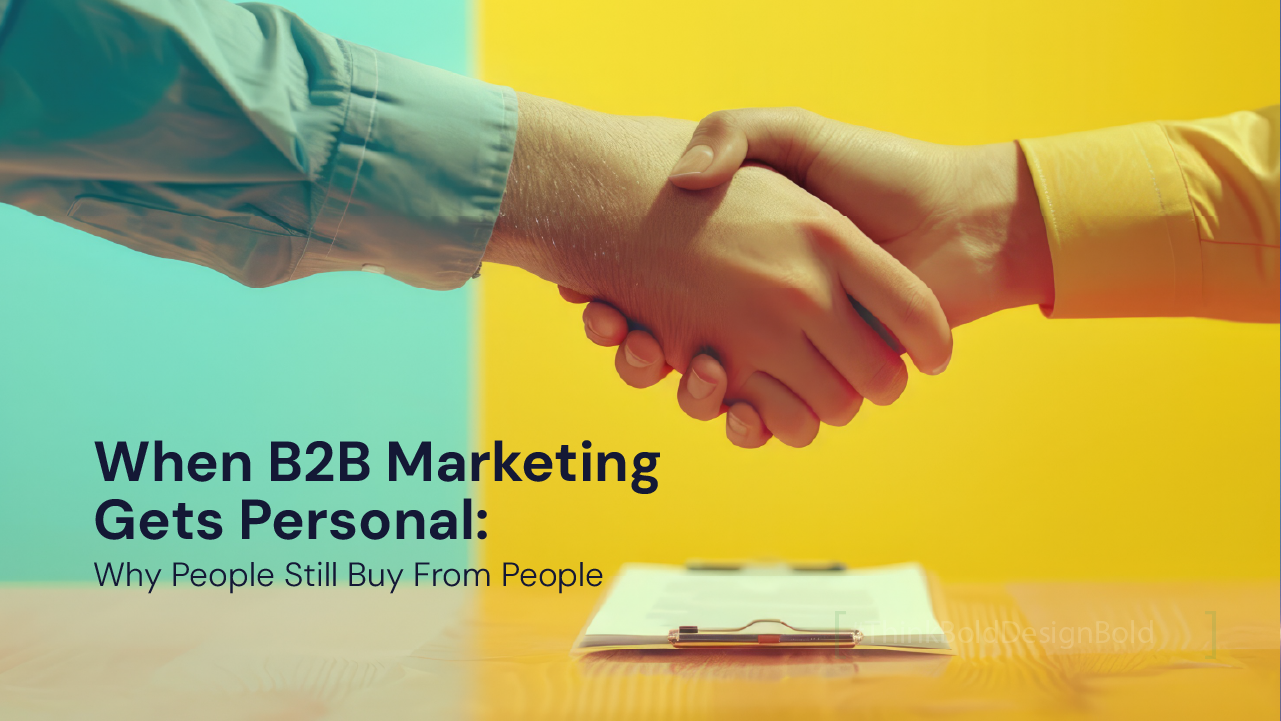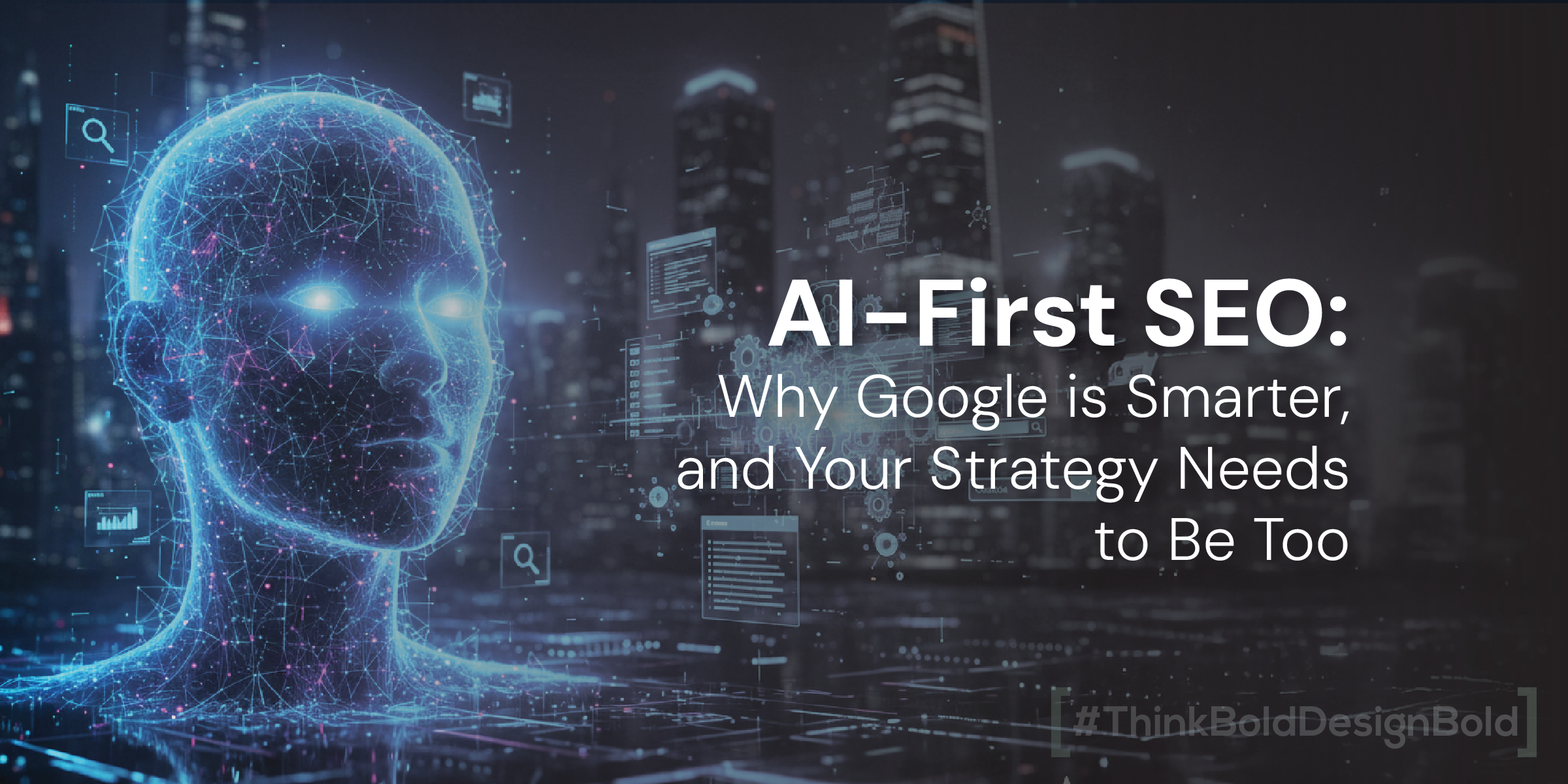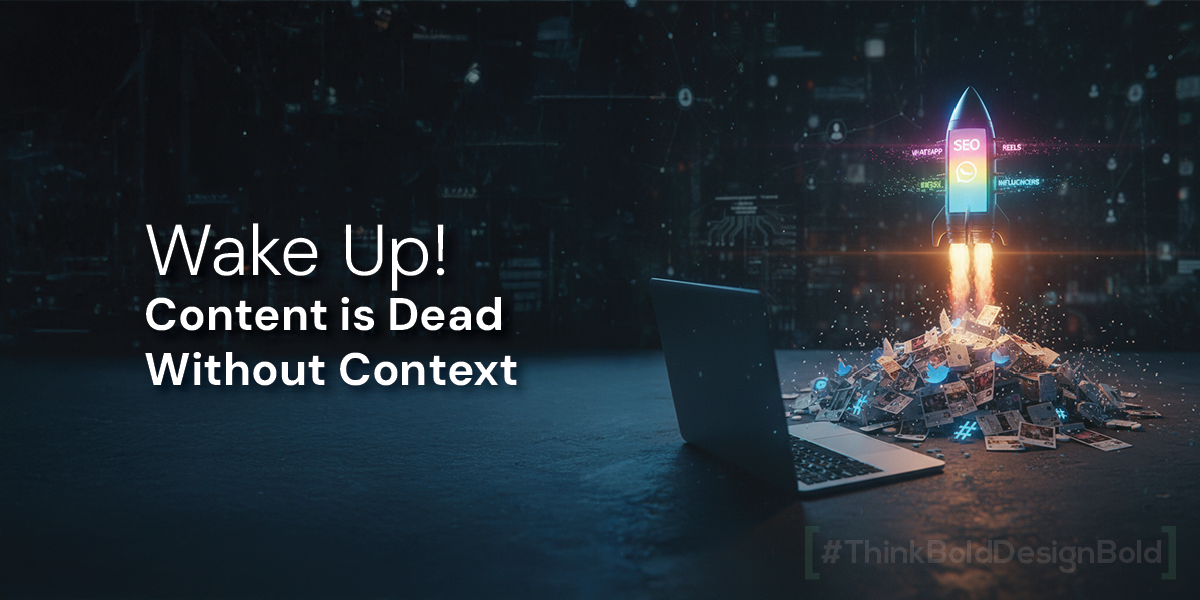You see a product on Instagram.
You check reviews on YouTube.
You visit the website, add it to your cart — but finally buy it on Amazon because delivery is faster.
Sound familiar? That’s the Indian shopper’s reality.
In today’s market, consumers move effortlessly between channels, expecting brands to keep up. And the brands that do— the ones that make every touchpoint feel like part of one smooth story — are winning hearts, loyalty, and sales.
Welcome to the world of omnichannel marketing — where your brand’s website, WhatsApp, store, and social media all speak the same language.
Why Omnichannel Matters in India
India’s digital and physical worlds have merged faster than anywhere else.
- Over 900 million mobile users,
- 800 million online shoppers expected by 2030, and
- A retail industry growing at 10% per year, powered by social commerce, UPI, and instant delivery.
Yet, even with this boom, one problem persists — disjointed experiences.
Many Indian brands treat their app, website, and store as separate silos. But customers don’t think in silos. They think in journeys.
A buyer may discover you on Instagram, browse your website on mobile, call your store for details, and walk in to purchase. If any step feels inconsistent — tone, price, experience — trust breaks.
That’s why omnichannel marketing isn’t just a strategy anymore; it’s survival.
Omnichannel vs. Multichannel: What’s the Difference?
In multichannel marketing, you show up everywhere — social media, website, print, email — but each channel runs independently.
In omnichannel marketing, everything connects.
- Your online and offline offers match.
- Your tone and visuals stay consistent.
- Your customer data flows seamlessly across touchpoints.
It’s not just being present everywhere — it’s being coherent everywhere.
Indian Consumers Expect Seamlessness
Indian buyers are now more demanding — but also more open. They want flexibility without friction.
- 73% of Indian shoppers expect a consistent brand experience across platforms.
- 60% begin their shopping journey online but complete it offline (Think with Google, 2024).
- WhatsApp commerce is expected to handle $45 billion in transactions by 2027.
Brands like Reliance Trends, Nykaa, and Decathlon India are leading examples of seamless integration — blending digital convenience with personal touch.
How Top Indian Brands Are Nailing Omnichannel
1.
Nykaa: Beauty with a Balanced Touch
Nykaa started online but built offline stores across India that sync perfectly with its app.
A product added to your wishlist online appears in your in-store recommendations. Discounts, offers, and loyalty points work across all platforms.
That’s omnichannel magic — consistent, effortless, and personalized.
2.
Tanishq: Bridging Tradition and Technology
Tanishq’s “Endless Aisle” feature lets in-store shoppers browse online collections on digital screens and have items delivered to their homes.
It respects the Indian shopper’s love for physical experience while using technology to expand choice.
3.
Decathlon India: The Sports Superconnector
Whether you’re buying on the website, app, or walking into a warehouse store — the interface, pricing, and loyalty system remain identical.
The customer feels the same sense of ease everywhere — sporty, practical, community-first.
Why Indian Businesses Struggle With Omnichannel
- Data is scattered: Different teams handle social, web, and CRM separately.
- Tone mismatch: A brand sounds cheerful on Instagram but robotic on email.
- No shared insight: Customer feedback from one channel never reaches another.
- Legacy systems: Many businesses still treat digital as an afterthought.
But these are solvable problems — not limitations.
Practical Tips to Build Seamless Omnichannel Experiences
🔹 1.
Map the Customer Journey
Start by understanding how your audience moves from awareness to purchase.
Example: A jewellery buyer might first see your ad on Instagram → chat on WhatsApp → book a store appointment → pay online.
Once you know the journey, build systems that support it smoothly.
🔹 2.
Keep a Unified Brand Voice
Whether it’s a reel, brochure, chatbot, or store greeting — the tone should sound unmistakably yours.
Example: Zomato’s wit, Tata’s trust, or Fevicol’s humor — they sound the same everywhere.
Consistency breeds comfort.
🔹 3.
Link Data Across Channels
Use a shared CRM or data tool that integrates all customer touchpoints.
So when someone contacts you via WhatsApp after browsing your website, your team already knows what they were looking for.
🔹 4.
Empower Your Teams
Train every department — sales, social media, design, and support — to understand the full customer flow.
An omnichannel journey isn’t built by tech alone; it’s built by people who care.
🔹 5.
Personalize Without Being Pushy
Use customer data to assist, not annoy.
For example, if a user looked at home office chairs, follow up with “How’s your setup coming along?” instead of “Buy now or miss 20% off.”
🔹 6.
Sync Offers and Policies
One of the biggest frustrations for Indian customers: online discounts not valid in stores, or vice versa.
Align pricing, coupons, and warranties across all platforms.
🔹 7.
Integrate WhatsApp and Voice
WhatsApp Business and AI chat are becoming key channels for Indian buyers.
Example: JioMart and Lenskart now allow customers to browse catalogues and even place orders directly from WhatsApp.
Make sure these touchpoints carry your same brand feel — friendly, efficient, and personal.
The Indian Advantage
India’s diversity is a challenge — but also an advantage. With a young, tech-hungry population and rapidly growing regional e-commerce, omnichannel allows you to reach customers everywhere — from Mumbai malls to Coimbatore kirana stores.
Unlike Western markets, Indian customers enjoy hybrid journeys — they love the tactile store experience and the digital convenience. Omnichannel allows both worlds to meet.
DarkBox Perspective: Making Every Touchpoint Feel Human
At DarkBox, we believe technology should amplify humanity, not replace it.
When we design omnichannel strategies for our clients, we don’t just think in pixels or platforms — we think in people.
We help brands:
- Build consistent design and communication across website, social media, and print.
- Connect CRM and analytics systems for unified tracking.
- Craft WhatsApp and email campaigns that feel conversational, not automated.
- Align store experience with online branding, down to tone and visual cues.
One of our retail clients saw a 27% increase in returning customers simply because we made their in-store staff greet visitors with the same tone and offer they used online. Seamless doesn’t mean complex — it means connected.
Checklist: Is Your Brand Truly Omnichannel?
✅ Your website, app, and social pages share one design identity.
✅ Prices, offers, and messages are consistent across channels.
✅ Your customer service team knows the customer’s previous interactions.
✅ Your WhatsApp, SMS, and email campaigns don’t overlap or spam.
✅ Feedback and data are collected centrally.
If you said “no” to any of these, it’s time to stitch your touchpoints together.
The Takeaway
In today’s India, your brand isn’t competing for attention on one platform — it’s competing for memory across all of them.
Customers don’t remember where they saw you; they remember how you made them feel.
When every interaction — digital or physical — feels seamless and sincere, you stop being “just another brand.” You become part of the customer’s lifestyle.
And that’s what omnichannel marketing is really about — turning a sale into a story.





